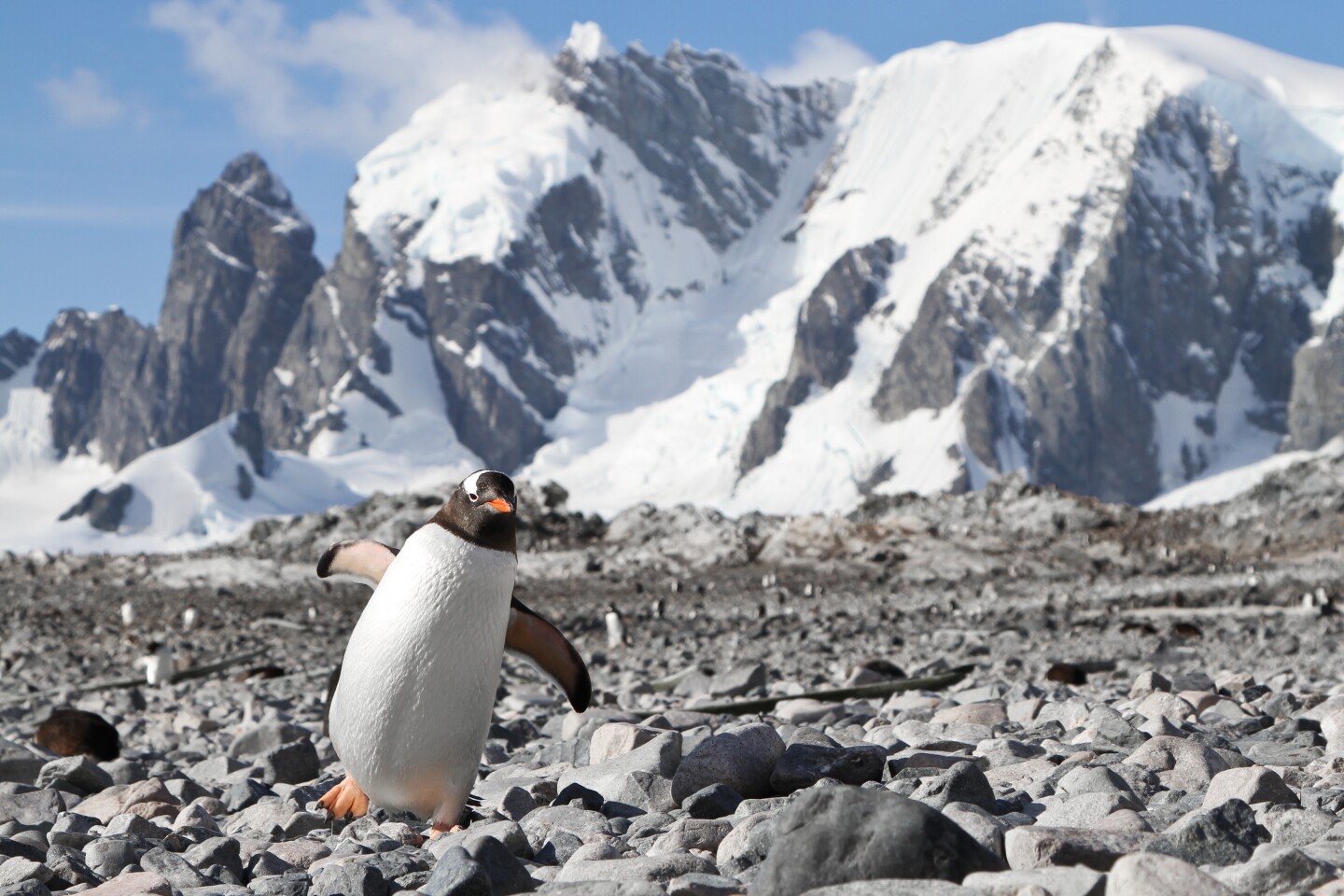There are places so staggering that you struggle to keep up with the speed at which your brain is processing beauty. Their vastness humbles, even as their wonders make you feel more connected to the world than ever before.
Antarctica is one of those places, and I know because I’m lucky enough to have been there. I found myself dwarfed by icebergs glowing aquamarine from within and embraced by sunsets burning orange over the glass-smooth sea. And I broke out laughing while watching penguin chicks chase their moms in circles.
The windiest, coldest, and driest continent, with the highest average elevation to boot, Antarctica has evolved a specialized ecosystem with hearty creatures that not just survive, but thrive despite their harsh surroundings. Whales, penguins, and seals are perhaps the best-known inhabitants, followed by sea birds, icefish, and ever-abundant krill. Beyond the famous fauna, colorful mosses and lichens abound, while dark-green algae bloom along the shore.
Although Antarctica spans roughly the size of the U.S. and Mexico combined, it only receives 40,000 travelers each year. (For a point of comparison, the city of Las Vegas receives 40 million visitors annually and covers just 136 square miles.) Yet that’s already enough human interaction to pose risks: Trampling, overfishing, and the introduction of non-native species are just a few of the human dangers that threaten Antarctica’s delicate ecosystem.
In 1959, in an act of foresight, 12 nations active in Antarctic research crafted The Antarctic Treaty—an agreement that declared it “a natural reserve, devoted to peace and science” for all. It’s now supported by a global partnership of nearly 50 nations, who through their Environmental Protocol strive to limit human impact on the Antarctic habitat.

Rachel Rudwall
The treaty means that, as a traveler, you should consider yourself a steward for the protection of this pristine place. When you set foot in penguin colonies, you’ll be both compelled and empowered by the Treaty to preserve Antarctica’s raw beauty for future generations. And when you cruise among pods of bubble-net feeding humpbacks on your small-group Zodiac, you’ll learn how best to approach wildlife without disturbing its rhythms.
Still, to be effective, it’s essential you choose a tour operator that respects the Antarctic ecosystem through word and deed. The International Association of Antarctica Tour Operators (IAATO) is a group of more than 100 companies working to provide travelers a “safe, enriching wilderness experience.”
Silversea—a member of IAATO, and an Antarctic expedition leader—is an example of how much good a tour company can do in Antarctica. Its ships are specially designed to navigate local conditions and powered by the cleanest-burning fuel on the market. Its biosecurity measures, including checks for seeds or biological compounds on passenger clothing, ensure that no non-native species make it to shore.
Silversea limits shore landings to 100 people at a time, minimizing stress to flora and fauna while also delivering an intimate experience for travelers. Additionally, thanks to Silversea’s diverse team of guides—including biologists, historians, ornithologists, and Antarctic research specialists—travelers explore with a deeper understanding of the Antarctic habitat and their responsibilities to respect it.
A continent transcending borders, Antarctica remains a rare testament to unified global aspiration. Antarctica is for all of us, and experiencing it firsthand only inspires a greater commitment to protecting this marvel.











